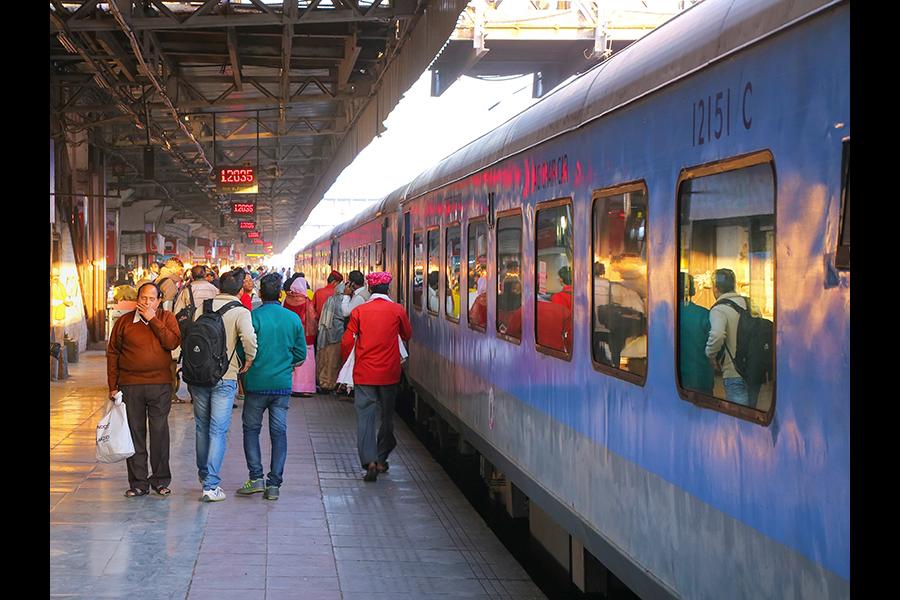For railways, bankability is the station to reach
Innovative projects, top draw execution, sea-change in customer experience, and private sector participation are crucial elements of this ride to a new morrow
Indian Railways, the behemoth of the transport sector, is on the move and a holistic approach for development is currently underway. Under investment, disproportionate pricing, significant uptick in competition from the road sector had plagued Railways in the last couple of years. The Indian Railways has taken these challenges head-on and is working towards getting its house in order.
Some of the ambitious projects that it has currently taken up are:
a) ERP implementation which alone is expected to save close – Rs 30 – 40,000 crore in the next ten years
b) Accounting sector reform which will help Railways what is their correct cost structure, align itself better for any market borrowing and also be in line with accounting principles as followed by any other corporate body
c) Electrification of railway lines - to double the coverage in the next five years and thereby providing significant cost savings
d) Development and implementation of ambitious and challenging projects like the High speed rail and Dedicated Freight Corridors
e) Asset monetization by putting to bid about 400 station for redevelopment – through the PPP route
With the current operating ratio at close to 96 percent, it is going to be a long road before all these projects will start to contribute both in increasing revenue and to decrease cost
Participation of private sector has largely been restricted to execution of EPC contracts and has seldom been involved in any large scale development or partnership. In a way this has proved detrimental to Indian railways as the real competitive forces and agility to respond to external changes became very limited. When the external environment changed dramatically in a short period of time e.g. drop in coal volumes in the freight basket, Railways was and is still looking at ways to offset the deficit
Speed of laying tracks has increased significantly in the last couple of years but on the other side projects which are of national importance like the Dedicated Freight Corridors have missed their time lines multiple times and still it is not very sure whether the new timelines will indeed be met by the railways.
There are quite a few things to learn from other countries on the Non fare box front too, like in Japan on an average the contribution of non-fare box revenue is close to 50 percent. In India this is currently at 7-8 percent and the target is to move the needle to 20 percent. Better value capture strategies and coordinated development with urban development department of the state and flexibility in operation for the private developer will certainly go a long way in achieving higher share.
Enhancing customer experience is the need of the hour, with increased choices and railways not wanting to be left with lower end of the pyramid of customers on whom the cost to service is high and the ability to pay is low, it is imperative to maximize revenues from the affordable segment i.e. the AC class passengers. Multiple product differentiation is being explored but this sector is unique in a way, that is majority of customer touch points is same to all the users and hence to carve out a customer experience strategy for a few is a challenge and railways can look at how this can be done and a pay per use cost recovery can be worked out.
Lastly, with such ambitious investment requirements, tabling in bankable projects will get the right set of investors and bring in wider participation which in turn brings in accountability and better governance.
Proper risk allocation is the key need of the hour and not make the private sector accountable for all the risks, thereby exposing the project to higher chances of failure. The need of the hour is to have projects which are Investment Grade and Investment Ready, i.e. all the approvals and other pre preparatory work has been completed in full and the investor or developer is not in for any external and regulatory surprises at the time of project execution.
To sum it up, Railways has to make good the lost time and opportunity else it will lose its customers for good. Passengers need convenience, cost-effectiveness, and timeliness. There is enough empirical evidence to suggest people are willing to pay if they get value.
Today’s consumer has many choices, so the railways will have to offer differentiators by reinventing itself rather quickly.
- By Jagannarayan Padmanabhan, Director, CRISIL Infrastructure Advisory
The thoughts and opinions shared here are of the author.
Check out our end of season subscription discounts with a Moneycontrol pro subscription absolutely free. Use code EOSO2021. Click here for details.
